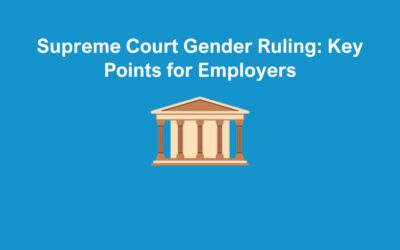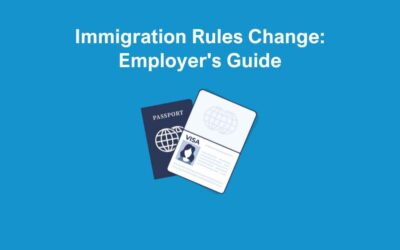We support many of our clients with their payroll. One of the most common questions we get asked is how to work out prorated salary for employees. Pro rata pay calculations are crucial for businesses, especially when employing part-time staff or those working unconventional hours. It ensures fair pay for work done, aligns with employment laws, and maintains a transparent, equitable workplace.
This guide aims to simplify the process of working out pro rata salaries to ensure you pay your employees correctly.
What is Pro Rata Salary?
Pro rata, a Latin term meaning ‘in proportion’, refers to the allocation of an amount in a proportionate manner. In the context of salary, it means calculating an employee’s wage based on the hours they work relative to a full time employee. An example of this is that if your employee’s annual salary would be £30,000 pro rata in a full time 40-hour week, but they only work 20 hours a week, their annual salary will be £15,000.
What employees does pro rata salary apply to?
Pro rata salary calculation applies to several types of employment situations. These can include:
- Part-Time Worker: The most common application of pro rata wage is for part-time workers. Since they work fewer hours than full-time employees, their salary is calculated in proportion to the hours worked.
- Employees with Reduced Hours: Employees who have opted for reduced working hours, perhaps due to personal commitments or lifestyle choices, also have their salaries calculated on a pro rata basis.
- Joined the company half way through the pay period: If an employee joins the business in the middle of the month and after the payroll cut-off, their first payslip will be calculated on a pro rata basis. This may also apply if the employee leaves the business half way through the month.
- Employees on Maternity/Paternity Leave: In some cases, when employees return to work on a part-time basis following maternity or paternity leave, their salary is adjusted pro rata to reflect their new working hours.
In each of these cases, the pro rata salary ensures that employees are paid fairly and proportionally to the amount of work they do relative to a full-time equivalent position. It’s an important concept for maintaining equity and fairness in the workplace, especially in diverse and flexible working arrangements.
It’s important that you closely review your policies and seek professional guidance before making any calculations.
How to Work Out Pro Rata Salary
Here’s a step-by-step guide to calculating pro rata salary:
a. Determine the Annual Full-Time Salary: Know the annual salary for the full-time position the same as the one being considered for pro rata calculation. Let’s say the full time hours salary is £40,000
b. Calculate the Hourly Rate: Divide the annual full-time salary by the total number of working hours in a year. For example, if the full-time hours are 40 per week, multiply this by the average number of working weeks in a year (usually around 52), then divide the annual salary by this figure. Example: 40 x 52 = 2080 then: £40,000 divided by 2080 = £19.23
c. Determine the Employee’s Work Hours: Identify how many hours the employee will work. Let’s say this is 20 hours per week.
d. Calculate Pro Rata Salary: Multiply the hourly rate by the number of hours the employee will work per week (£19.23 x 20), and then multiply this by 52 to get the annual pro rata salary.
An example of this: 384.61 x 52 = £20,000.
You can also use the Breate HR Pro Rata Calculator.
Considerations for Holiday Entitlement
The annual leave entitlement for part-time workers or those on a pro rata contract is calculated in proportion to their work hours. The principle behind this is that part-time employees should receive the same holiday allowance and benefits as full-time employees, but adjusted proportionally to the hours they work. For instance, if a full-time employee is entitled to 28 days of paid holiday per year, a part-time employee working half the hours should be entitled to 14 days. You can use our holiday calculator to work this out.
Employers must ensure that the method used to calculate pro rata holiday entitlement is fair and does not discriminate against part-time workers. The calculation must comply with the Working Time Regulations and other relevant employment laws.
It’s important for employers to clearly communicate how holiday entitlement is calculated. You must also ensure that all employees understand their rights and entitlements. This transparency helps in maintaining a fair and compliant workplace.
Need help on How to Work Out Pro Rata Salary?
At The HR Booth, we provide comprehensive payroll support to a diverse range of businesses, understanding the unique challenges and requirements of each. We recognise the complexities involved in how to work out pro rata salary. This is especially in aligning with the legal compliance and equity in the workplace. Our team of experts is adept at navigating these intricacies, ensuring that your payroll is accurate, compliant, and fair. If you would like any advice or support with your payroll, feel free to contact our HR experts.
How to work out pro rata salary accurately is critical for maintaining fairness and transparency in the workplace.
By following the correct steps, you can ensure you are providing equitable pay to all employees. Always stay updated with employment laws to ensure compliance and foster a supportive work environment.
How do you estimate pro rata?
This can be done by:
- Firstly, determine the employees’ annual salary
- Then, identify the period covered by the full amount
- After this, work out the amount of that period that was worked. For example, 4 months out of the 12
- Finally, multiply this amount by the fraction
How do I calculate Pro rata holidays
It is a similar calculation for the pro rata holidays:
- Determine what the employees’ holiday entitlement is. This is typically 28 days
- Identify the time period worked (as a fraction)
- Finally, multiply the full entitlement by fraction of the year worked
What is the formula for pro rata?
Full amount x (period worked/total period) = pro rata amount
What does pro rata mean in school jobs
When referring to school jobs, for pro-rata, you will adjust their salary based on the actual weeks worked rather than a full year’s salary. This is done to ensure more accuracy when it comes to determining salary payments.
How to work out full-time salary from pro rata
This can be done by reversing the calculation for pro-rata:
- Identify the pro rata salary and the time period worked
- Identify the fraction out of the time period worked
- Finally, divide the pro rata salary by the fraction
How do I work out pro rata salary term time only?
- Firstly, identify the full-time salary
- Then add on the weeks worked and the holiday entitlement
- Divide this number by 52 weeks. Get your answer as a fraction
- Multiply the full-time salary by this fraction
How to calculate a pro rata salary per month
- Divide the annual salary by 12
- Work out the average days worked per month
- Multiply the monthly salary by the fraction of the month worked







